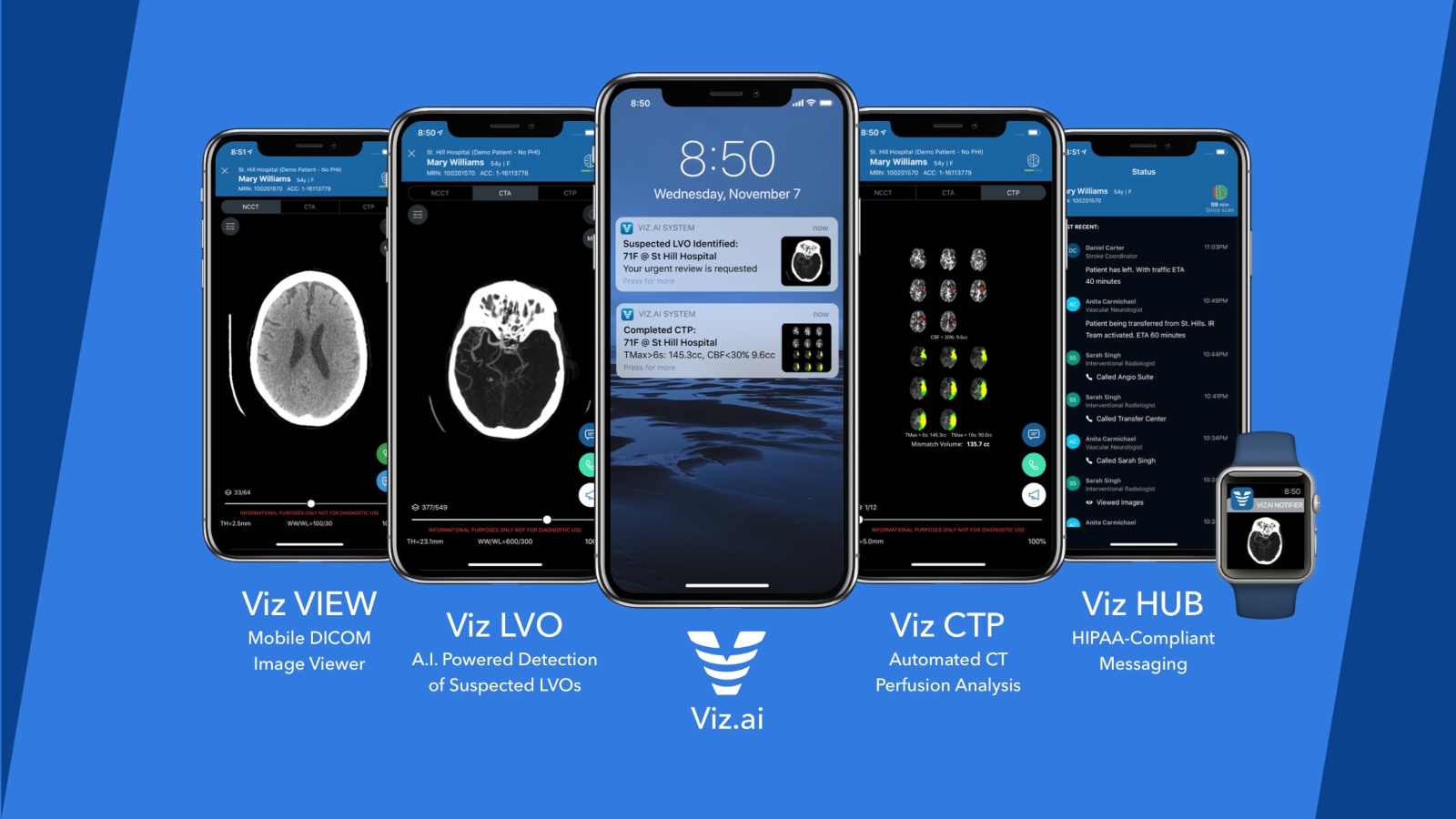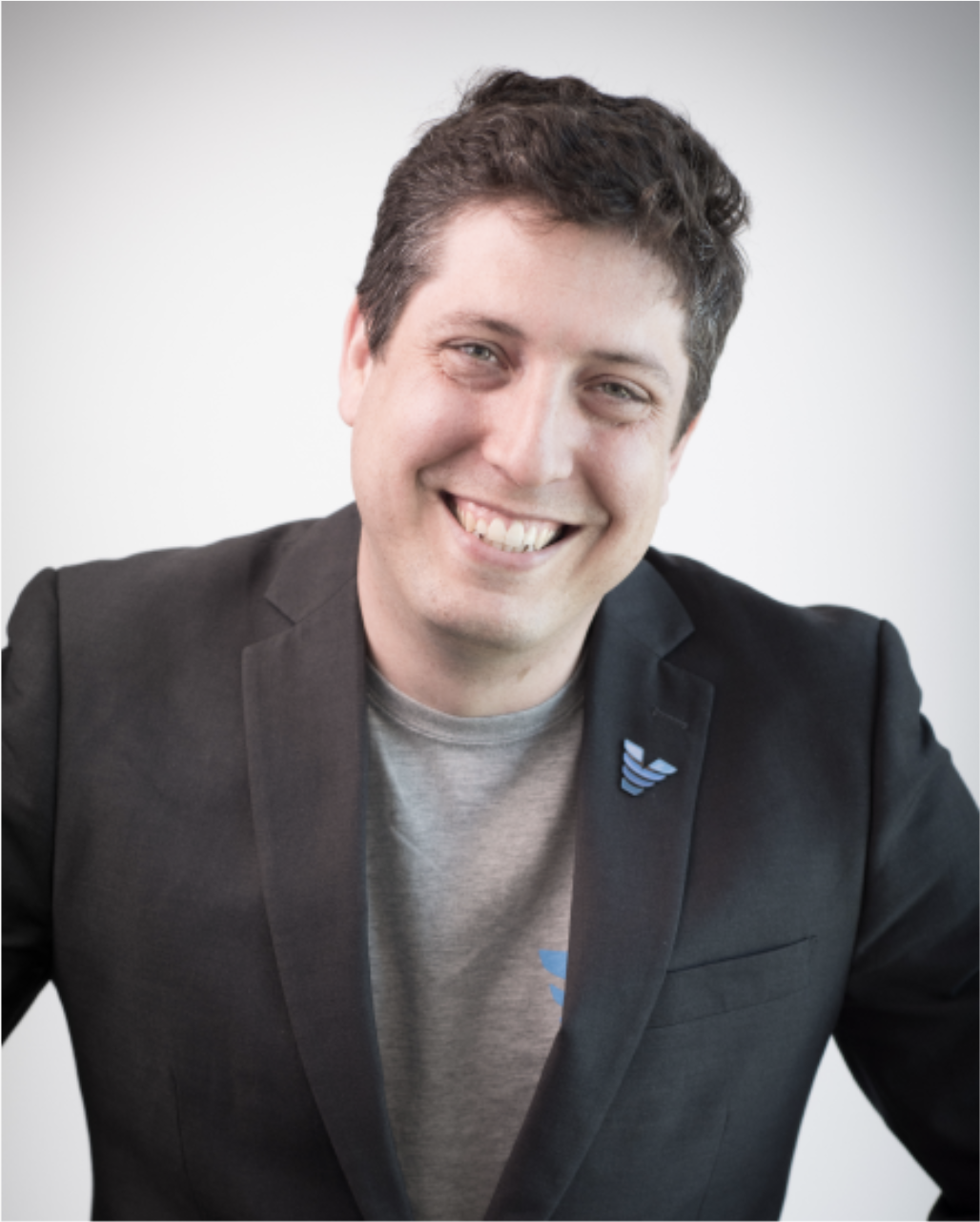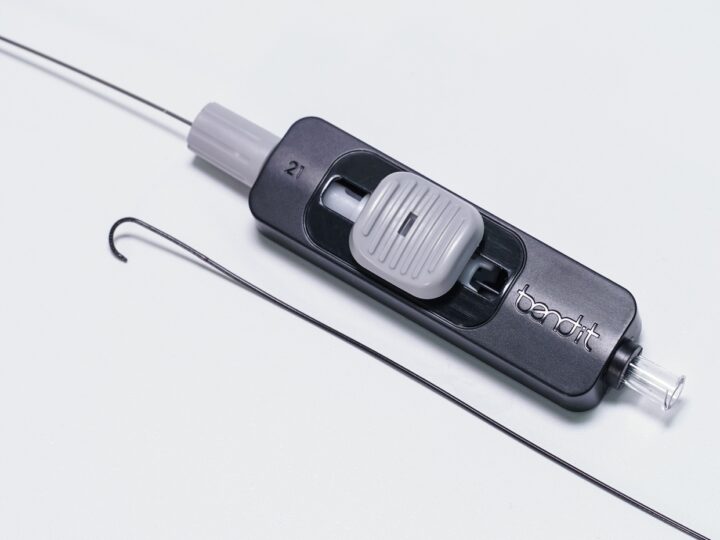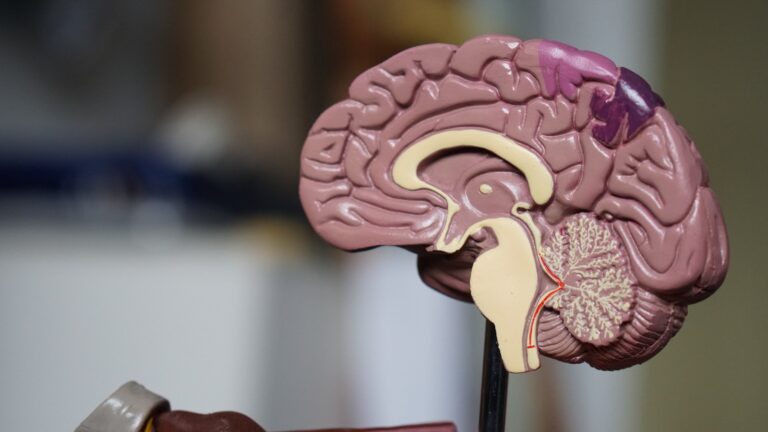The biggest cause of death or debilitation from stroke is time to treatment. It’s not a matter of training but of workflow automation.
CT scans need to be analyzed immediately, then sent to the right expert. If a particular facility doesn’t have the necessary equipment, where’s the closest hospital that does? If only a specific surgeon can do the job, how can he or she be located?
Every minute of delay can potentially be fatal. After six hours, it’s often too late to save a patient.
This problem requires intelligence of the artificial kind. Which is what Israeli tech company Viz.ai provides.
Viz.ai’s software monitors CT-generated images for signs of “large vessel occlusion” (LVO) strokes that may otherwise have been missed or taken too long to spot.
While LVOs account for only some 10% of strokes, they are the most devastating and result in more than 50% of the healthcare spend on stroke patients, Viz.ai cofounder David Golan tells ISRAEL21c.
“Patients either die or they live in assisted living facilities, sometimes for decades,” he says.

Stroke care went through what Golan calls “a transformative change” in the last decade. Until then, the main emergency treatment available was a drug, tPA (tissue plasminogen activator), “which goes into the brain and tries to melt or bust the clot in the blood vessel,” Golan explains.
tPA is the gold standard for ischemic strokes – those involving small blood vessels – ideally administered within three hours after a stroke. For massive strokes like LVOs, tPA doesn’t work as well.
A new approach, mechanical thrombectomy, is now the treatment of choice for LVOs.
“It involves making a small incision in the groin, then a catheter is threaded all the way to the brain to engage the clots and remove them,” Golan explains. “It’s like science fiction. It’s revolutionary in how it helps. Patients will arrive at the hospital half paralyzed. They can’t speak. Forty-five minutes later, they sit up in bed. Sometimes they ask to go home the same day.”
There’s one crucial caveat: “Very few hospitals can provide this procedure,” Golan says. “They need dedicated equipment and staff as well as an angio-suite.”
In the United States, only 1,000 surgeons can perform the procedure and fewer than 120 hospitals are properly outfitted, Golan says. (In Israel, only 12 surgeons can do it.)
So, in addition to diagnosing an LVO stoke quickly, the medical team also needs to know the closest hospital that can perform a mechanical thrombectomy.
“You have to sync between two hospitals, a brain surgeon, anesthesiologists. Sometimes there can be 20 or 30 people involved,” Golan notes.
Without AI, all this happens “in a completely serial fashion, where one person calls the other and then the next,” Golan explains. “We said to ourselves, this is fixable.”
Dramatically hastens communication and decisions

Viz.ai’s software detects an LVO in under 30 minutes. Then, it “broadcasts that news to everyone who’s subscribed to get an alert on their phone,” Golan says.
That might be a surgeon asleep in another city who, with a tap on his or her phone, can call up the patient’s scan. The app allows all involved staff to be in contact by voice and chat.
“It dramatically shortens the time for the team to communicate and make decisions,” Golan says. “Everyone is brought into the loop immediately. Sometimes, the ER in another hospital will call and say, ‘You have a patient with a stroke’ when the first ER didn’t even realize the scan had been completed.”
Golan saw a case where a senior neurologist was on a plane, got an alert on his phone via the airline’s Wi-Fi and orchestrated treatment for a patient from 10,000 feet in the air.
Viz.ai’s software is now installed in 300 US hospitals – and not just those with the facilities to conduct a thrombectomy.
“If you’re in an expensive, state-of-the-art hospital, you’ll probably be treated okay,” Golan says. “The problem is the rural hospitals without resources. We’re all about connecting the hospitals in the periphery with the main hospitals in real time.”
In Israel, Viz.ai is testing its system at hospitals in the Galilee region – including Rambam Health Care Campus in Haifa. In the US, Golan mentions Mount Sinai in New York and the Erlanger Southeast Regional Stroke Center in Tennessee as customers.
Setting up Viz.ai is relatively easy, Golan says – it can even be done remotely, although the company usually sends a representative to the hospital.
Solving the time conundrum
Viz.ai was founded by Golan and Dr. Chris Mansi, a surgeon who identified the problem in 2015 after operating on a woman who was hit by a car in London.
Mansi performed emergency surgery to reduce pressure on her brain. The operation was a success, but the woman subsequently died.
Mansi wanted to know why. He discovered that there had been a four-hour delay in identifying from her medical scans that the patient had a large blood clot and needed to be transferred to Mansi’s hospital.
As Mansi probed further, he learned that fewer than 10% of LVO patients receive brain-saving treatment in time. He spoke about what led to the creation of Viz.ai in a 2018 TED Talk, below.
Mansi moved to California to enroll in the Stanford MBA program with the aim of solving this time conundrum for LVO stroke patients. Golan was at Stanford working on his post-doc in machine learning and AI.
“I was oriented towards an academic career, publishing papers,” Golan tells ISRAEL21c, when he had “a stroke-like experience” that left him unable to speak or move his limbs for a short time.
“Even at Stanford Hospital, one of the best in the world, I could see there were workflow problems,” he says.
After he was discharged, a friend suggested he consult with Mansi to read his scans. Mansi told Golan, “You’re are very lucky you’re not dead. Solving this inefficient workflow is what brought me to Stanford.”
Golan replied, “Your idea can actually be built.” And he, Golan, was just the computer science engineer to do it.
Mansi and Golan raised a seed round of $7.5 million from Google CEO Eric Schmidt’s Innovation Endeavors, followed by a $21 million Series A round in 2018 and a Series B of $50 million in October 2019.
Viz.ai’s flagship product – Viz LVO – received FDA clearance in 2018.
Golan returned to Israel where he runs the Tel Aviv branch of Viz.ai. “Nothing compares with the talent here,” Golan says.
The company’s 85 staffers are split equally between the Israeli and American locations, with more hires planned in the coming year.
Enough work to go around
Israel has other companies that use artificial intelligence to make sense of radiological scans.
Aidoc was named by TIME as one of its “50 Genius Companies of 2018” for technology that analyzes scans in real time, catching potentially serious issues even before a human radiologist reviews the results.
Zebra Medical does much the same, focusing on detecting cardiovascular disease, fatty liver cells (an early sign of diabetes) and emphysema, and analyzing bone mineral density. The company has partnered with Dell Services to host the some 2 million scans a month it receives from hospitals.
The competition doesn’t worry Golan. “There’s room for everyone,” he says. “I know the founders of these companies. They’re great guys. There’s enough work to go around.”
Indeed, with a new stroke diagnosed every 40 seconds in the US alone, resulting in 140,000 deaths a year, that certainly seems to be the case.
“There’s so much to be done, patients can only benefit from better care,” Golansays.
For more information, click here

















